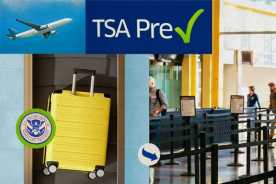AARP Hearing Center


Key takeaways
- Required minimum distributions start at age 73.
- The deadline is typically Dec. 31, but don’t wait until the last minute.
- Roth accounts are exempt for the original owner but might not be for heirs.
- RMDs are taxable income — make plans to manage the tax impact.
One of the primary benefits of traditional IRAs and 401(k)s is that they let you save and invest pretax money for retirement. But you can’t keep that money stashed — and those taxes deferred — forever. By law, you’re obligated to make annual withdrawals once you reach a certain age and to pay federal taxes on that income at your regular rate.
The SECURE 2.0 Act of 2022, a comprehensive package of federal provisions designed to help people save more for retirement, amended some of the regulations surrounding these withdrawals, which are called required minimum distributions (RMDs). If you’re confused about whether the changes affect you, here’s what you need to know.
The RMD minimum age is 73
Owners of traditional IRAs and workplace retirement accounts such as 401(k), 403(b) and 457 plans must begin making annual withdrawals at a minimum amount set by the IRS once they reach a certain age. (Roth accounts are different — see below.) Changes to federal law have increased the age threshold twice in recent years; it’s now 73 and will remain there until 2033, when it goes up to 75.
What hasn’t changed are the RMD deadlines. When you reach the minimum age, you can delay your first mandatory withdrawal until April 1 of the following year. From then on, you must take your annual RMD by Dec. 31.
What does that mean for 2025 RMDs?
If you were already 73 at the start of 2025, you must take your RMD by New Year’s Eve. If you turned 73 this year, you have until April 1, 2026, to take your 2025 RMD — but you might not want to wait.
“I’m not a fan of delaying that first payment because then you have to take two in the following year,” says Judith Leahy, a senior wealth adviser for Citi Personal Wealth Management. Two RMDs in one year could lead to a sizable tax bill, she notes.
Other deadlines may apply
Taking RMDs is not an instantaneous process. You typically request the distribution through your retirement plan provider or the financial services company that holds the account. You may have to fill out forms.




































































More From AARP
Tax Breaks You Shouldn’t Overlook
Every deduction counts in tax season4 Strategies for Making Your Money Last
Here’s how to ensure you’ll have the cash you need for as long as you live
9 Ways You’re Sabotaging Your Retirement Savings
These common investment errors can trip up your retirement plansRecommended for You